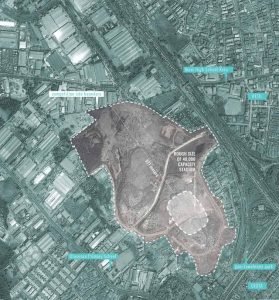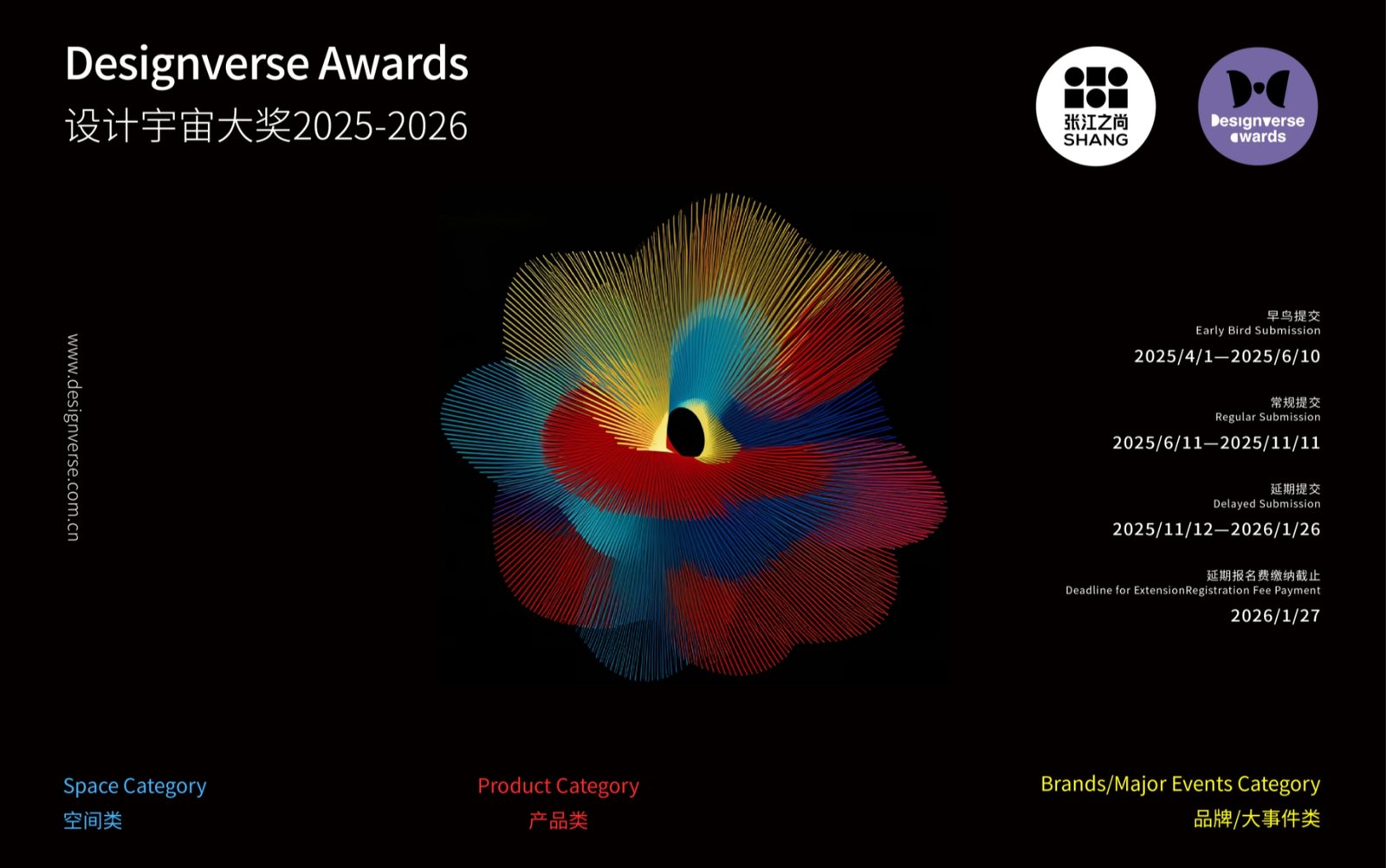
WASTE – Lagos Landfill Stadium International Open Competition
Waste is a global issue common to all urban areas. The world now creates more than a billion tons of garbage a year, which it incinerates, buries, exports, and recycles. As major cities expand so must their ability to reverse wasteful tendencies and begin living more efficiently and sustainably. Until recently in Lagos, the Nigerian megalopolis handled its waste by relocation. It seemed simple enough to drive waste outside of town to the 100-acre Olusosun dump site beginning in 1992. Since then, Lagos is estimated to be the fastest growing metropolis in the world, expanding from a population of 7 million to over 21 million.
The landfill that was once far from any urban activity is now surrounded by it. Neighbors of the landfill include educational, residential, commercial, industrial and religious buildings. Earlier this year, the Olusosun Landfill was shut down by local government and slated for redevelopment as an urban green space and public park.
By 2025, waste produced by cities around the globe will be enough to fill a line of rubbish trucks 3,100 miles long every day. (World Bank Group)
Perhaps a vision for the new park could include an anchor program that incorporates new attitudes relating to waste. Waste in the urban environment goes beyond that which fills alleyways and landfills. In the urban core, space is something rarely taken for granted. Buildings serve a mix of uses while roadways and sidewalks are often places for commerce as well as transportation. Yet, the most profound and expensive modern day constructions humanity builds, continue to underperform.
The stadium is a revered place, but one with benefits that rarely extend beyond servicing a single team or small portion of population. In recent times, the construction of new stadiums has been met with harsh criticism due to their unrealistic budgets, sparse usage, tendency to fall into dilapidation, and inability to serve surrounding communities and city centers.
CHALLENGE
Arch out loud asks participants to design a new multi-purpose stadium at the former Olusosun Landfill. How could this massive structure, known to be wasteful in its resources, limited lifespan, and inconsistent usage, confront critical issues of waste in Lagos while sited on a former landfill? Designers are encouraged to consider how the stadium might act as a porous entity, serving as both a world-class sporting facility and local commodity.
Participants should consider how the stadium could serve as an anchor for the rehabilitated site and function during times when sporting events are not in session. In order for the new proposal to avoid becoming another wasteful stadium, what local benefits could the stadium offer to a city burdened by issues such as lack of electricity, poor educational facilities, insufficient housing, regular flooding, and lack of drinkable water?
MEGACITY
Today, megacities are at the center of global conversation. The world’s urban population has come to outnumber that of rural areas. These “population corridors” are forming around the world; merging populated cities into unprecedented and unbroken urban landscapes. Lagos is one of the poorest and fastest-growing megacities. As Africa’s largest city and by some estimates the fastest growing metropolis in the world, Lagos has been subject to rapid urbanization. The city is growing at a rate of 600,000 people per year, and has an average population density of 7,700 people per square mile. Infrastructure, housing, and working wages struggle to meet these overwhelming growth numbers.
Lagos is an economic engine for an entire region that, unlike its Chinese or Brazilian megacity counterparts, is not lifting its population out of poverty, but continues to concentrate wealth in the hands of a tiny minority. In 2017, the average Lagosian earned $1,036 USD per year. About 80 percent of the workforce is part of the informal economy where individuals are doing business without oversight or support.
From people scavenging garbage at landfills to major corporations (like mobile phone companies) doing business through informal kiosks on the side of the road. Regardless of the country’s financial disparity, people flock to the city in hopes for a better life. This phenomenon, The African Dream, has been underlined in architect, Rem Koolhaas’s book, Lagos: How it Works. In the 2007 publish book, Koolhaas comments that present-day Lagos reflects how other cities will evolve in the future and that the city is in “a constant state of becoming.”
OLUSOSUN WASTE LANDFILL
Rapid urbanization yields rapid waste. Lagos produces 11,000 tons of waste per day which is 0.3% of the total waste of the world’s cities, currently at 3.5 million tons. With the migration of individuals from rural areas, some of the city’s coastal slums ran out of usable land; causing the disposal of trash to overflow into the swampy areas of those slums.
Landfills such as Olusosun were created outside the city to store waste away from inhabitants. But as the city grew, the once isolated landfill became the city center. Olusosun is now surrounded by residential, commercial, industrial and even religious buildings making overconsumption impossible to conceal. As the site has been subject to many fires, only recently, March 2018, has the state shut it down as it was hazardous to the community. Plans to rehabilitate the landfill into a park include infrastructure beneath to harness methane emissions from the waste as energy for the city, and improve the country’s electricity shortage.
Given the impending reincarnation of the landfill as a park, the site is missing an anchor-how could a multipurpose stadium fill this void as an anchor for the park that engages the surrounding community?
 STADIUM
STADIUM
Futbol (soccer) remains the No. 1 sport in the world, with the largest international fan base. Attending futbol matches instills a sense of pride for local populations. The stadiums that house these spectacles become a symbol of national pride and togetherness. Despite such opportunity, stadiums fall under major scrutiny due to their limited shelf-life, sparse usage, and disruptive size; making them almost impossible for reuse. Moreover, often within 10-20 years, stadium infrastructure can degenerate. If not well maintained, they become seldomly used, unsafe for events, and ultimately abandoned.
At its peak, Lagos National stadium was one of the best in Africa, until it fell victim to neglect. It last hosted a major football match in 2002, and for the past 15 years, it has been abandoned without proper maintenance or events. It is now mostly occupied by squatters. With a lack of state-of-the-art stadiums, Lagos is losing athletes to other countries. Resulting in government plans to build five new stadia to promote sports excellence and tourism.
Stadiums are both an icon for a community and business enterprise. Generally, they are used for a couple of hours a day, for a few events a year, which can be economically straining for developing countries, such as Lagos, by wasting plots of development. Instead of depriving citizens the opportunity to attend sporting and arena events by banning stadiums, the stadium typology for Lagos should be rethought to be both accommodating and sensitive to such places. By combining the traditional stadium program with another supplementary permanent program, the structure could accommodate events year round.
This potential typology could meet the needs of the entire community by creating a mini city center within their neighborhood and a more sustainable approach to stadium design.
PROGRAM
Designers should interpret the ideal supplemental program for the stadium, exploring the inherent shortfalls of standalone stadiums. Proposals should address the present-day concerns of Lagos by implementing an additional program that meets the requirements of the surrounding neighborhood and city.
Stadium
- 1 Futbol (Soccer) Field
- Seating for capacity of 40,000 spectators
- Support & Amenities (Lockers, Merch, etc.)
- Vehicle Parking and Drop-off (surface or below ground, consider driverless cars, ride sharing, bikes and tunnel entry points).
Supplemental Program – Choose a supplemental program from the following:
- Community Center
- Educational Facility
- Recycling Center
- Housing Complex
- Retail / Bazaar
- Clinic / Health Center
- Power Plant
AWARDS
FIRST PLACE – $5,000
RUNNER-UP – $1,000
10 HONORABLE MENTIONS
DIRECTORS CHOICE AWARD
TOTAL PRIZE PACKAGE $8,000
[edgtf_button size=”medium” type=”” text=”Participate” custom_class=”” icon_pack=”font_awesome” fa_icon=”” link=”https://www.archoutloud.com/waste.html” target=”_self” color=”” hover_color=”” background_color=”” hover_background_color=”” border_color=”” hover_border_color=”” font_size=”” font_weight=”” margin=””]




 STADIUM
STADIUM
